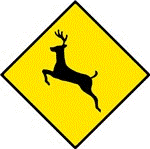USDA National Wildlife Research Center Symposia
Date of this Version
August 2000
Abstract
The accidental introduction of the brown treesnake (Boiga irregularis) to Guam led to the demise of most of the island’s native avifauna and herpetofauna. The snake is also responsible for significant economic losses through frequent power outages and consumption of poultry. Control of the snake, aimed at preventing its inadvertent dispersal from the island and protecting native wildlife and economic resources, is accomplished using specially designed snake traps, hand capture, snake detector dogs, and snake barriers. Although control tools capture large numbers of snakes, control efforts are labor intensive, costly, and ineffective in reducing snake populations across the unbroken forested landscapes found throughout much of the island. The efficacy of control methods has been widely researched; however, no comprehensive evaluation of the costeffectiveness or ideal integration of control tools in differing scenarios has been completed. In this paper, we present an overview of current federal control efforts and discuss the costs and limitations of snake control.

